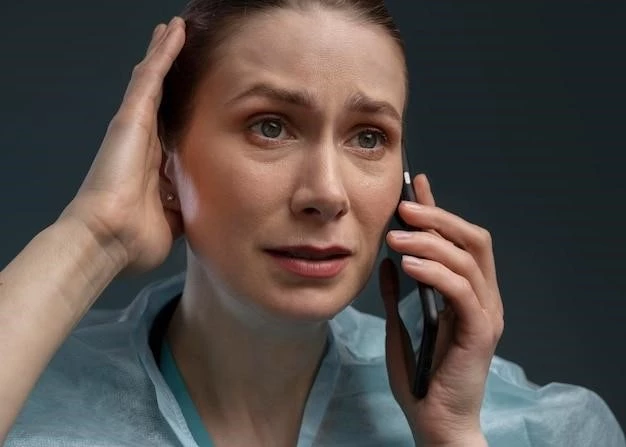Facial Femoral Syndrome
Facial femoral syndrome is a genetic disorder characterized by orthopedic abnormalities and craniofacial anomalies. Individuals with this condition often exhibit short stature, cleft palate, hearing loss, hip dysplasia, developmental delay, speech difficulties, and brachydactyly. Facial femoral syndrome follows an autosomal dominant pattern of inheritance.
I. Introduction
Facial femoral syndrome, also known as craniofacial dysostosis with some anomalies of the vertebrae and/or aplasia of the proximal femur, is a rare genetic disorder with a spectrum of features affecting various parts of the body. This condition was first described in the medical literature in 1975 by Gorlin et al. The syndrome is characterized by a combination of craniofacial anomalies, orthopedic abnormalities, and other developmental issues. Facial femoral syndrome is considered an autosomal dominant disorder, meaning that an affected individual has a 50% chance of passing on the condition to each offspring.
Facial femoral syndrome presents challenges in diagnosis and management due to the wide range of symptoms and complexities involved. Beyond the physical manifestations, individuals with this syndrome may also face social and emotional difficulties, as the condition can impact their overall quality of life. Understanding the various aspects of facial femoral syndrome is crucial for healthcare professionals, affected individuals, and their families in order to provide appropriate care, support, and resources.
II. Symptoms of Facial Femoral Syndrome
Facial femoral syndrome is characterized by a combination of symptoms that affect different systems of the body. Individuals with this syndrome may exhibit a range of physical and developmental features, including⁚
- Craniofacial Anomalies⁚ Facial femoral syndrome often presents with craniofacial abnormalities such as cleft palate, ear deformities, and hypertelorism (widely spaced eyes).
- Orthopedic Abnormalities⁚ Individuals with facial femoral syndrome may experience orthopedic issues like hip dysplasia, proximal femoral focal deficiency (PFFD), and vertebral anomalies.
- Short Stature⁚ Many individuals with this syndrome have short stature, which can be evident from early childhood.
- Hearing Loss⁚ Sensorineural hearing loss is a common feature of facial femoral syndrome and may require intervention such as hearing aids.
- Developmental Delay⁚ Children with facial femoral syndrome may experience delays in achieving developmental milestones, such as walking and talking.
- Speech Difficulties⁚ Speech delays and articulation issues are observed in some individuals with facial femoral syndrome.
- Brachydactyly⁚ Shortening of fingers or toes, known as brachydactyly, is another characteristic feature of this syndrome.
The combination of these symptoms can vary in severity among affected individuals, and not all features may be present in every case of facial femoral syndrome. Early recognition of these symptoms is crucial for timely diagnosis and appropriate management of the condition.

III. Diagnosis of Facial Femoral Syndrome
Diagnosing facial femoral syndrome can be challenging due to its rarity and the wide range of symptoms it presents. A comprehensive evaluation by a medical team familiar with rare genetic disorders is essential for an accurate diagnosis. The diagnostic process may involve the following components⁚
- Clinical Assessment⁚ A physical examination to assess the craniofacial features, orthopedic abnormalities, growth patterns, and developmental milestones of the individual.
- Genetic Testing⁚ Molecular genetic testing can identify mutations in the genes associated with facial femoral syndrome, providing concrete evidence for diagnosis.
- Radiological Studies⁚ X-rays and other imaging tests may be used to evaluate bone structure, hip joints, and vertebral abnormalities characteristic of the syndrome.
- Audiological Evaluation⁚ A hearing assessment to detect sensorineural hearing loss, which is a common feature of facial femoral syndrome.
- Developmental Assessments⁚ Observation of developmental progress and potential delays in speech and motor skills to understand the individual’s needs.
Due to the complexity and variability of symptoms in facial femoral syndrome, a multidisciplinary approach involving geneticists, orthopedic surgeons, audiologists, speech therapists, and other specialists is crucial for a thorough diagnosis. Early detection and diagnosis play a critical role in initiating timely interventions and support services for individuals with this condition.
IV. Treatment Options for Facial Femoral Syndrome
Management of facial femoral syndrome involves a multidisciplinary approach aimed at addressing the diverse symptoms and challenges faced by individuals with this condition. While there is no cure for facial femoral syndrome, treatment strategies focus on improving quality of life, addressing specific symptoms, and providing necessary support. The treatment options may include⁚
- Orthopedic Interventions⁚ Surgical procedures such as hip reconstruction, limb lengthening, or corrective surgeries for orthopedic abnormalities like hip dysplasia and brachydactyly.
- Speech Therapy⁚ Speech and language therapy to address speech difficulties, articulation issues, and communication challenges that may arise due to cleft palate or developmental delays.
- Hearing Aids⁚ Management of hearing loss through the use of hearing aids or other assistive devices to improve auditory function and communicative abilities.
- Developmental Support⁚ Early intervention programs, occupational therapy, and educational assistance to promote optimal development and enhance learning skills.
- Genetic Counseling⁚ Providing genetic counseling to individuals and families to understand the inheritance pattern of the condition, assess the risk of recurrence, and make informed family planning decisions.
- Lifestyle Modifications⁚ Implementing adaptive strategies, assistive devices, and modifications to daily activities to enhance independence and mobility for individuals with physical limitations.
Regular monitoring by healthcare professionals, including orthopedic specialists, geneticists, audiologists, and other relevant specialists, is essential for ongoing management of facial femoral syndrome. Collaborating with a team of experts can help tailor treatment plans to address the specific needs and challenges of each individual affected by this rare genetic disorder.
